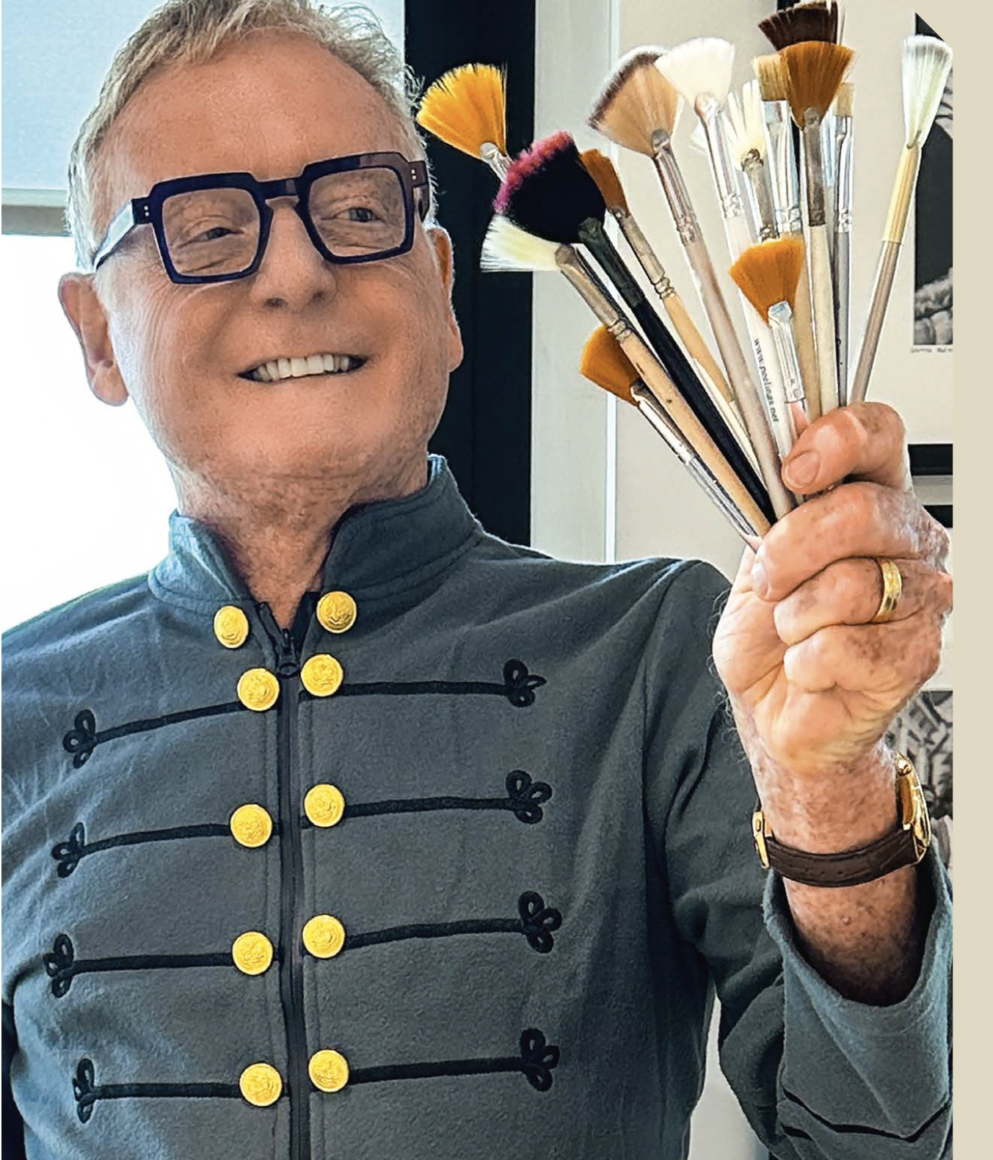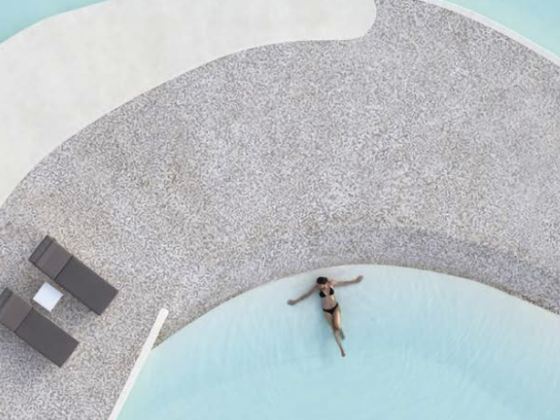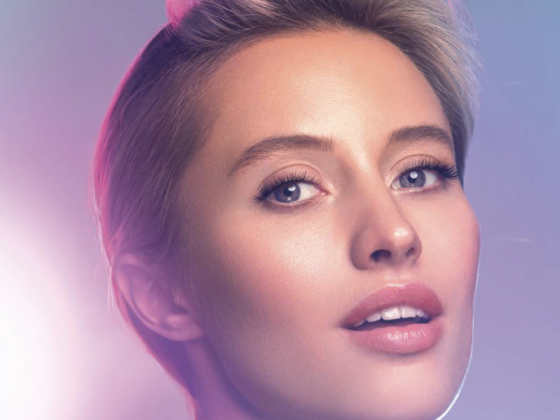Dermatology was not the obvious choice for France’s king of peels, but his interest in skin proved too strong and led him to turn it into an art form.
Anti Age Magazine: Tell us about how you got into medicine…

Dr Jean-Luc Vigneron: I went to school in Strasbourg and my sixth form class was outstanding. I originally wanted to go to the ENA business school, but my parents knew a boy who’d gone there who wasn’t very nice, so I decided against it. After that, I wanted to get into fish farming or creating theme parks, which was a new concept at the time. But eighteen of my classmates said, “You should do medicine like us!”, so I did medicine like them, and that was where it all started. I made some fantastic memories: I was class delegate, started the list of philanthropic Dadaists [Ed: Dadaism questions all of the ideological, aesthetic and political conventions and constraints; its founder, Jean Arp, was born in Strasbourg], and became a specialist in anatomical drawings: I was even anatomy monitor for 3 years. I then did a year of psychiatry but, even though I found the theory interesting, the practical side was less gratifying. So I thought I’d try being an obstetrician, since bringing babies into the world is very rewarding. Unfortunately, when I realised that it would involve working at night, I gave up and turned to dermatology, as it was uncharted territory for me. Professor Edouard Grosshans, the Pico della Mirandola [a symbol of limitless knowledge] of dermatology, was enthralling. What stands out about dermatology? When you start out in this speciality, it’s a completely different kind of medicine; you don’t understand a thing, it’s like a whole other language.
AAM: Did your hobbies shape your lifestyle choices?
Dr J.-L.V.: I used to do a lot of sailing and horse riding and wanted to be closer to the sea, so I moved to Normandy. In the month after my move, I did my first peel. I already knew this was an area I wanted to explore. At the time, (back in the 1980s), fillers were not yet around, so I read up on the subject and found out who was offering peels in France. There was Dr Aron Brunetière with Unna’s resorcinol paste but, even though his techniques gave good results as a medium peel, it did not seem to be enough. I started looking into trichloroacetic acid (TCA). I have the ability to accurately repeat a procedure I’ve read about in a book, as long as the book is well written. The trick is to get inside the author’s head when you’re reading. So I moved the TCA technique forward, helped by my dear friend Dr Jean Marc Trauchessec. But tackling the deep layers with TCA is not a good idea, so I started considering phenol.
I carried out research into this subject and, on the advice of Dr Pierre Fournier, went to see Dr Clyde Litton in Washington. However, I didn’t learn much there! I then put together my first formulations and performed my first phenol peel on a woman from Caen who, for several months, pushed me to enhance my knowledge in this field. The formula still needed some work, but I met Dr Yoram Fintzi in Tel Aviv, an acquaintance of Christine Talayrach (who later became Christine Vigneron). This doctor worked in a rather brutal way, as an anatomical pathologist (whose role is to analyse biological samples), so he was not exactly gentle, but patients do not tend to complain in Israel… With this new knowledge, I worked on my formulas and this gave rise to Exopeel, a deep peeling technique with phenol. Later on, I created formulas for medium peels, superficial peels, etc.
AAM: Was medical aesthetics always in the background?
Dr J.-L.V.: When I moved to the south of France, I wanted to concentrate fully on aesthetic medicine. For two years, I was the second-highest consumer of Botox in France (I collected the bottles and turned them into works of art, one of which contains six years’ worth of bottles!). I also became a consultant for Dermaceutic. I remember when I first started taking an interest in peels, the procedure was almost dormant, especially in Europe, though a renaissance was in the pipeline with superficial glycolic peels. It was around the time that we – Christine Talayrach and I – were trying to revive peels in Europe that Dr Zein Obagi was aggressively pushing the use of excessive concentrations of TCA in the USA. Our job has always been to explain the three different levels of peels to doctors, and show them that with the third level we can really stimulate the dermis and achieve an age-reversing effect of around 15 years.
AAM: Deep peels can be quite alarming for patients!
Dr J.-L.V.: Yes, we show the before/after photos and the photos from the week after. There are no secrets! We immediately see which patients are on board and which are not. Some of the husbands, when they come to collect their wife and she’s all bandaged up, ask me, “Are you sure this is her?” And even though the technique has evolved and is now pain-free, you have to accept that there will be swelling, that your eyes will be half-closed for 24 hours. It requires a week of downtime, but that is not much for a whole new lease of life!
AAM: When another doctor carries out a peel, do they use your formulas?
Dr J.-L.V.: Yes, if they don’t want to put together their own formula, they can buy my formula from Dermaceutic, with whom I have gone down the long road of obtaining the CE mark, a procedure that involves going before a specialist board which makes for a very complex regulatory and administrative process. Before they can perform a peel, we require them to undergo specific training, because this formula is an “atomic bomb” of a product. We select the candidates according to their experience. Exopeel™ is not just a solution that we apply, it is a whole METHOD: preparing the skin, the complicated act of applying the solution, the essential things to do the next day, the check-ups over the week and the first few months.
AAM: Can patients have another peel ten years later, for example?
Dr J.-L.V.: First of all, our peels are designed for people with wrinkles, but the people who have had one never really have wrinkles again… I’ve performed around 1,000 Exopeel™ Full Face procedures and I’ve only had around 30 requests to have another one. I’ve noticed two strange things: when they ask for another peel, they still have way fewer wrinkles than before and, strangely, they always ask around 11 years after the first!
AAM: Publications and hobbies?
Dr J.-L.V.: My first important scientific publication was in 1997 for the leading medical magazine at the time, “Le Concours medical”, who gave me 12 pages in 3 successive issues. I then published articles in China, Japan, the USA and Germany. As for hobbies, other than horse riding, which I’ve done since I was 9, including at competition level for 15 years, I edited an erotic comic for author Riverstone, who created Nagarya [Ed.: No point searching on Google, the images are blurred]. One of my other passions is photography. I’ve always enjoyed taking photos (a lot of urban landscapes) and have even trained other doctors in 24×36 analogue photography. I’ve had an exhibition in the FNAC store about Prague after the Wall came down. I used to always choose my holiday destinations according to where I wanted to photograph, and that’s still one of my travel criteria today. As for reading, I’m a fan of the SAS series of spy novels; I’ve read them all and I knew the author Gérard de Villers’ wife, the beautiful Marie-Christine, very well. She would travel with him to the incredible and dangerous places he described in his books (the French secret service would debrief him upon his return!). I really admire adventurers, pioneers, people who understand things before anyone else.
Where to find him? Clinique VillaBianca 832 Bd Pierre Sauvaigo, 06480 La Colle-sur-Loup
More informations: villabianca.fr















